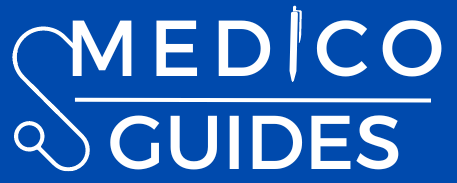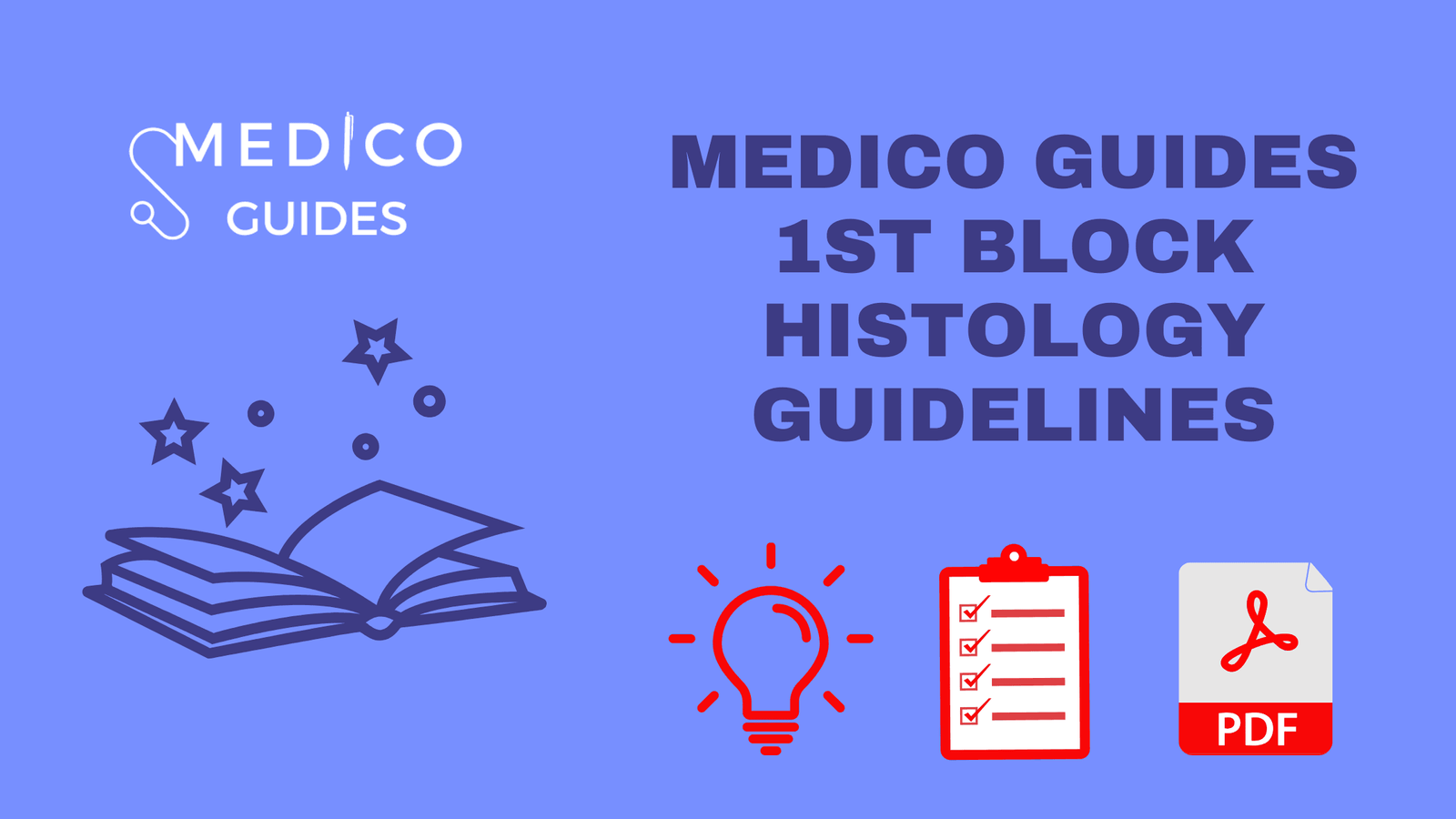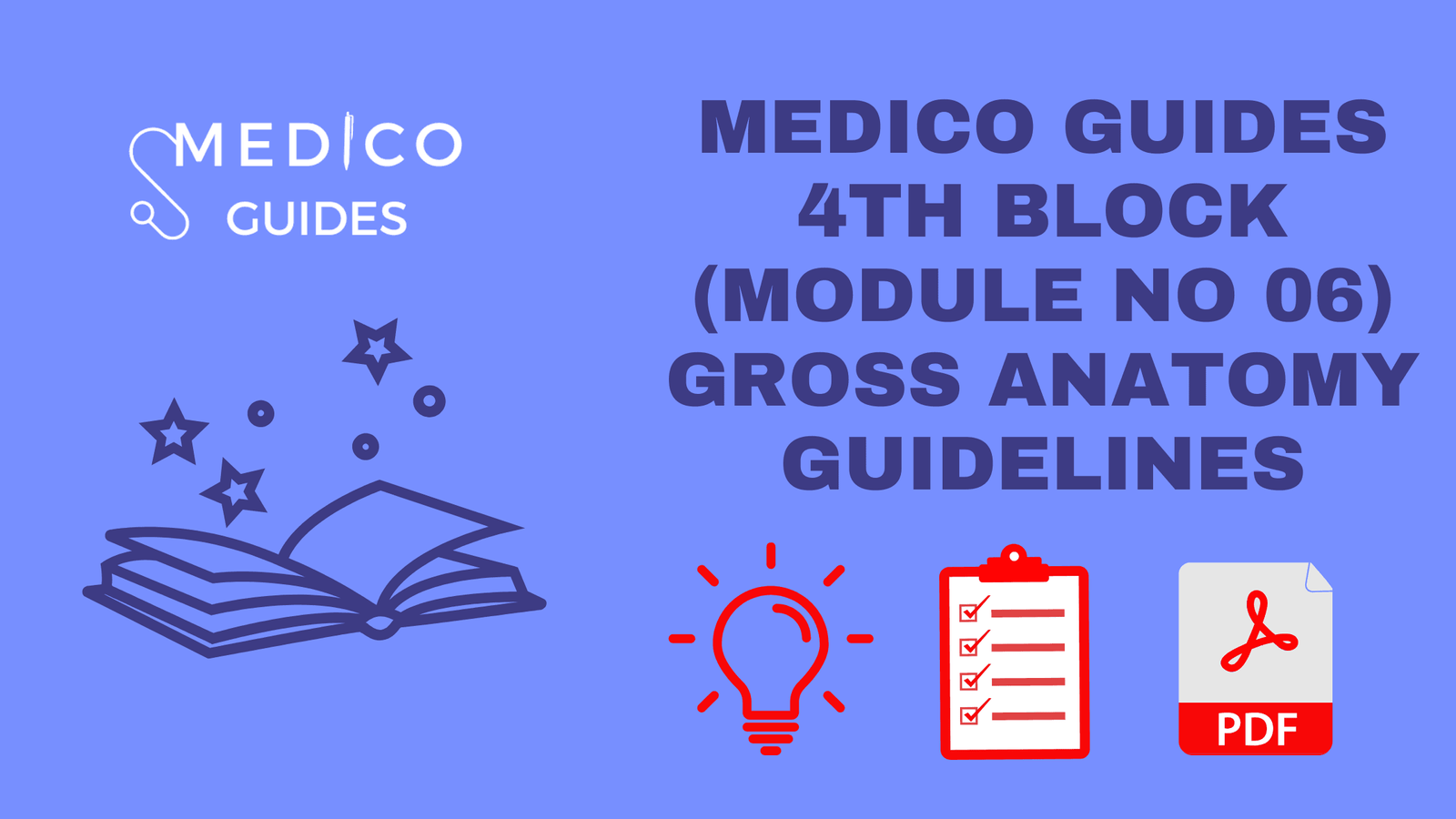Prepared by:
Zuha Iftikhar (G14)
Compiled by:
Hafiz Muhammad Umair Noor (G12)
UHS 1st Block
(Module No 01)
Reference Book:
- Langman Medical Embryology 14th Edition (Latest)
Some Integrations:
- KLM
Learning Objectives:
- These are Mentioned as per the Latest UHS Curriculum of Session 2025-2026
Chapter 1: (LO-F-A-038)
- Do the Definitions Mentioned in the Learning Objectives ( Just Read them Once , Not Important , You can skip as well )
Chapter 2: (LO-F-A-010,011,012,013,014)
- Primordial Germ Cells
- Clinical correlate Teratomas *
- Chromosome theory of Inheritance (Read once)
- Mitosis/Meiosis (You already know about it, Just Do it as Mentioned in Learning Objectives, Difference form)
- Numerical Abnormalities (Important)
- Important terms: i) Euploid ii) Aneuploid iii) Trisomy iv) Monosomy v) Nondisjunction vi) Translocations (Do it for MCQ POV)
- Trisomy 21 Down Syndrome (You have to do all the clinical Presentations , Make sure to Memories them through visual Image) Do Definition /concept of Mosaicism given in it.
- Trisomy 18, Trisomy 13, Turner Syndrome, Triple X syndrome ( Clinical presentations through visual Image)
- Klinefelter Syndrome (Annual system Past Paper SEQ)
- Do All abnormalities for Scenario-Based SEQ & MCQs
- Structural Abnormalities (Important)
- Cri-du-chat Syndrome, Angelman Syndrome very Important, Prader-Willi Syndrome Very important, Miller Dieker Syndrome, Fragile X Syndrome
- Do Remember which Chromosome is involved in a Particular Abnormality for MCQs
- Important Terms: i) Deletion ii) Microdeletion iii) Fragile Sites iv) Genomic Imprinting (Viva Qs) Do these for MCQ POV just
- Cri-du-chat Syndrome, Angelman Syndrome very Important, Prader-Willi Syndrome Very important, Miller Dieker Syndrome, Fragile X Syndrome
- Gene Mutations:
- Just Remember these terms: i) Single Gene Mutation ii) Mosaicism
- Diagnostic Techniques (not important Just Do the Names only)
- Oogenesis* Important Do complete till End
- Prenatal= before Birth, Postnatal= At puberty/After Birth (You can do these Topics from KLM as well if you want, otherwise Langman is Good to Go)
- Spermatogenesis* Important Do complete till End
- Clinical Correlate Abnormal Gametes
After Doing the Complete Chapter, Go through Problems to Solve at the End once, Key given at the End of the Book.
Chapter 3: [LO-F-A-015,016,017,018,019,020,021(i)]
- Ovarian Cycle, Ovulation Complete
- Corpus Luteum (Formation, Function, Fate) Corpus Albicans, Oocyte Transport Complete
- Clinical correlate Mittelschmerz*
- Fertilization (Define, Phases, Results) Complete very Important :
- i) Capacitation ii) Acrosome Reaction (MCQs, SEQs, Viva Qs)
- Clinical correlate Contraceptive Methods*, Infertility* Complete
- Cleavage, Blastocyst Formation, Epiblast, hypoblast & Axis formation Complete
Clinical correlate Embryonic Stem Cells, Adult Stem Cells, Abnormal Zygotes (Spontaneous Abortion) Complete
- Uterus at the Time of Implantation
After Doing the Complete Chapter, Go through Problems to Solve at the End once, Key given at the End of the Book.
Chapter 4: (LO-F-A-020,021,022)
- Why is it called rule of 2? Because of Embryonic Disc Layers , Trophoblast Layers , Two cavities, extraembryonic Mesoderm Layers.
- Do All Days, and after Reading All Days, Shortlist the Points at the Side of Each Day, This way:

- Important Terms: i) Layers of Trophoblast ii) Amniotic Cavity iii) Lacunar Stage iv) Exocoelomic cavity v) Uteroplacental Circulation vi) Decidua Reaction vii) Primary Villi
- Clinical correlate (Important SEQ):
- Abnormal Implantation Complete
- Ectopic Pregnancy/Extra uterine Important SEQ
- Pouch of Douglas, Primary ovarian pregnancy
- Hydatidiform Mole / Molar pregnancy Important SEQ
- Genomic Imprinting Viva Qs
After Doing the Complete Chapter, Go through Problems to Solve at the End once, Key given at the End of the Book.
Chapter 5: (LO-F-A-023,024)
- Gastrulation Complete
- Primitive Streak (Formation & Fate) Fate is given in the Fate Map Topic Write It Here, By shortlisting.
- Formation of Notochord Important Past Paper SEQ , This topic is Better Explained In KLM Chapter 4.
- Do it from KLM & then Read it from Langman as well and then Summaries it here, This Way on Langman:

- Establishment of Body Axes (You can Skip it, just do it for MCQs)
- Fate Map Establishment During Gastrulation *
- Growth of Embryonic Disc
- Clinical Correlate Complete Very Important
- Holoprosencephaly*
- Caudal Dysgenesis (Serinomelia) UHS Past paper Modular System 2023 Qs, This Question Came as exact Statement given in Problems to Solve Qs 3 of this Chapter.
- Situs solitus, situs inversus, laterality defects, situs ambiguous (heterotaxy)
- Kartagener Syndrome (Important)
- Development of Trophoblast (Do villi from here)
After Doing the Complete Chapter, Go through Problems to Solve at the End once, Key given at the End of the Book.
Chapter 6: (LO-F-A-025,026,027,028,029,030)
- Derivatives of Ectoderm (Important)
- Do it once from Langman and then Derivatives From a Diagram Given in KLM Chapter 5, All germ layer Derivatives summarized form:

- Neurulation (Very Important SEQ, Past Paper) Do it from KLM & Langman Both & then summarise it in the form of Points on Langman. From KLM Chapter 4.
- Neural Crest Cells ( Derivatives) Do take concept of it , its role , Table 6.1 (Important)
- Molecular Regulations are Not Important , If you want Learn just names of Some Involved ( Not seen in Any Past Paper MCQ, SEQ , VIVA)
- Clinical correlate (Important):
- NTDs i) Anencephaly ii) Spina bifida & its Types ( Types are Given in chapter 10 second Last Clinical correlate ) Often Asked.
- Folic Acid*
- Derivatives of Mesoderm ( Paraxial , Intermediate, Lateral ) Better to do it from KLM diagram shared above.
- Derivatives of Endoderm Better to do from KLM diagram
- Somite Differentiation (Important)
- Blood and Blood Vessels Complete
- Clinical correlate (Important):
- Capillary Hemangiomas*
- Folding of Embryo Better to Do it from KLM Chapter 5 for better understanding or You can do it from Langman given Under heading of Endodermal Derivatives.
- Homeobox Gene ( Skip , Read if you want)
- External Appearance During 2nd Month:
- Terms to remember : i) Crown-rump length ii) Make points of Changes in appearance ( MCQ POV)
- Clinical correlate: Birth Defect MCQ POV Just read once
After Doing the Complete Chapter , Go through Problems to Solve at the End once, Key given at the End of the Book.
KLM Topics: (Low yield Topics , MCQs)
(LO-F-A-031,032,033)
- Chapter 5 Table 5.1 or You can Read Theory of Highlights of Fourth to Eight Weeks (MCQs)
- Chapter 5, Estimation of Embryonic Age, Estimation of Gestational & Embryonic Age.
- Chapter 6, Viability of fetuses, Highlights of Fetal period, Factors influencing Fetal Growth (Just Names)
- Chapter 6, Procedures: (Important MCQs)
- Diagnostic Value of Amniocentesis, Alpha fetoprotein Assay, Chorionic Villi Sampling
Chapter 8: (LO-F-A-032,033,034,035,036,037)
- Development of fetus, monthly changes Time of birth (Just Read for MCQs)
- Clinical correlate:
- Low birth weight
- IUGR & SGA
- Fetal Membranes & Placenta with diagram (UHS past Paper Qs)
- Changes in trophoblast , chorion frondosum & decidua Basalis , Structure of Placenta , Full-term Placenta , Circulation of Placenta (Important)
- Functions of Placenta ( Just read Once for MCQs)
- Amnion & Umbilical Cord ( Just Read Important Viva Qs )
- Placental Changes at the End of Pregnancy ( UHS Past Paper Modular System 2023 )
- Amniotic fluid ( Read for MCQs)
- Fetal Membranes in twins Complete Important
- Parturition
- Clinical correlate:
- Preeclampsia (Important)
- Fetal Hydrops & Erythroblastosis fetalis
- Placental Barrier (Read once)
- Umbilical Cord abnormalities, Amniotic bands , Polyhydramnios* , Oligo*
- Premature Rupture of Membrane
- Vanishing Twins ( Past Paper UHS 2023 )
- Twin-twin transfusion
- Conjoined twins
- Preterm Birth*
After Doing the Complete Chapter , Go through Problems to Solve at the End once, Key given at the End of the Book.
Chapter 9: (Not Important for SEQs)
(LO-F-A-037,039)
- Principles of teratology
- Table 9.1 Rubell, Toxoplasmosis, X-rays, Hyperthermia, Thalidomide, Warfarin, ACE inhibitors, Alcohol (Important Viva Qs)
- Zika Virus, Antidepressant drugs
- Prenatal Diagnosis: (Read All Once and Mark MCQs & Viva Qs)
- Maternal Serum Screening
- Ultrasonography
- Chorionic villi sampling
- Stem cell Transplantation & Gene therapy (Just read not Important)
UHS 1st Block
(Module No 02)
Chapter 11: (KLM)
- Development of spleen (Important for Viva & MCQs)
- Accessory Spleen (Important)
- Origin of Spleen












